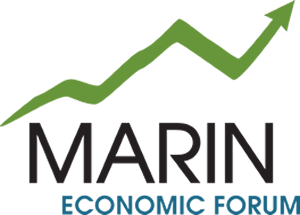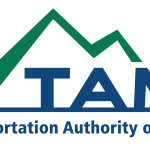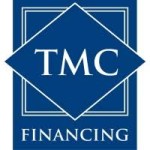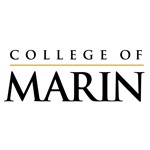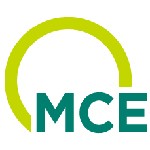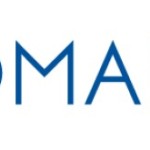2/27 Blog Topic: Yes, Bay Area, Marin County does have a Business Sector
February 27, 2020
Last week I participated on a panel at the 27th Sonoma State Economic Outlook Conference, an annual event focused on the North Bay economy. My panel was titled “Future Industries” and included business leaders from the tech, wine, tourism, and food sectors among others. Of the 6 panelists, I was the only one from Marin County, which struck me as odd considering the focus was on the North Bay.

In my presentation I showed the two figures below, in order to explain to the audience what the Marin County economy really looked like. To understand what our future opportunities are, it is important to know the past and current situation. Figure 1 shows our very diverse economy, with over 20 sectors contributing to the $20+ billion gross regional product (GRP) of Marin County. This information generated a lot of interested looks and note-taking from the audience. My major point here was that we don’t have a dominant industry that will be changing over time, nor have we had new sector entrants into the economy that are going to change the nature of our economy in the future. This chart from 2018 looks almost the same as 2011, but that is a good thing from the perspective of maintaining steady economic growth.

I then showed Figure 2, which contains a breakdown of companies by size of employee. Most audience members were not aware that almost 70% of all the businesses in Marin County have 9 employees or fewer. In Sonoma County they have a lot of large companies, like my fellow panelist from Keysight Technologies, which has several hundred in Sonoma alone.

At the end of the panel discussion several audience members confirmed they did not have knowledge of the size and diversity of the Marin economy, citing that oft-mentioned characterization of Marin as a “bedroom community.”
I had a similar experience last November when I attended the California Economic Summit in Fresno, a gathering of business, government, non-profit, and academic leaders, designed to create a “Roadmap to Prosperity” of policy recommendations for the State. I participated in a breakout session for the Bay Area and interacted with several other economic development leaders, many of whom knew about Marin County but nothing of its economy. This became obvious as our group strategized on future initiatives on regional economic development and the conversation was dominated by building housing and transportation near job centers – “why would anything be developed in Marin?” they asked.
This lack of awareness about the Marin County economy by our Bay Area peers may be known and accepted to some of our residents and public officials, but in today’s hypercompetitive Bay Area economy, we cannot be an afterthought. We have a Fortune 500 company that started and remains here and we have some of the most innovative and creative companies with global reputations (BioMarin, Glassdoor). Marin County is also home to several “fast-growing” companies that might go on to be global brands themselves. Venture capital is organizing here, and our education sector is forging stronger linkages to local businesses. It could be that we are not great at marketing ourselves.
So, “yes” Bay Area, Marin County has a business sector with proven capabilities and sustained growth, and we will continue to play a role in the region’s economic dynamism.
The Phase 1 report of the Marin County Business Retention & Expansion project is now available online! Please click here to access the report on our website.
For your information, the Bay Area Council has provided this very useful information regarding the coronavirus.
As updates surrounding the coronavirus, officially named COVID-19, are made public, the Bay Area Council remains committed to the health and wellbeing of our members and their employees. We have compiled information and resources from our member companies in the healthcare industry, as well as from state and federal government agencies, that you may consider disseminating and implementing as you deem appropriate. For the latest updates, please refer to the U.S. CDC (Centers for Disease Control and Prevention).
What is the current health threat in the U.S.?
According to the California Department of Public Health, while imported cases of COVID-19 have been detected in the U.S., there is no evidence of sustained person-to-person transmissions of the virus. On January 31, Health and Human Services Secretary Alex M. Azar II declared a public health emergency in the U.S. to aid the nation’s healthcare community in responding to the virus. While the CDC maintains that the potential public health threat posed by COVID-19 is high, the immediate health risk for the general public in the U.S. is considered low at this time.
What are the symptoms and who is at a higher risk?
Symptoms include cough, sore throat, high temperature, and feeling tired and achy, which are symptoms similar to the flu. According to Bay Area Council member company Sutter Health, “the flu poses a much greater public health risk in the United States at this time.”
People with an increased risk of infection include people with underlying health issues, older adults and healthcare workers caring for patients with COVID-19.
How can individuals protect themselves and others?
Bay Area Council member company Kaiser Permanente recommends the following practices:
- Wash your hands often with soap and water for at least 20 seconds.
- Avoid touching your eyes, nose, or mouth with unwashed hands.
- Avoid close contact with people who are sick.
- Stay home if you are sick, except to get medical care.
- Cover your mouth and nose when you cough or sneeze.
- Clean and disinfect objects and surfaces you touch.
How can businesses and employers respond and prepare?
The CDC warns that as COVID-19 is likely to spread, workplaces and other places for mass gatherings may experience absenteeism. Local transportation, healthcare and emergency systems may also be affected. Employers are encouraged to to stay updated on the latest developments and follow certain strategies now:
- Prevent stigma and discrimination in the workplace by not making determinations of risk based on race or country of origin, and maintain confidentiality of people with confirmed infections.
- Actively encourage sick employees to stay home and to practice respiratory etiquette and hand hygiene. Anyone with signs of fever, a temperature of 100.4° or greater, or other symptoms for more than 24 hours should not come in to work.
- Separate employees who arrive to work with acute respiratory illness symptoms from other employees and send them home immediately.
- Perform routine environmental cleaning.
- Advise employees to take certain steps before or during travel. The CDC provides the latest guidance and recommendations for each country. Ensure that your employees are aware of any policy for obtaining medical care outside of the U.S.
- Create a plan to implement in case of increased workplace absenteeism as well as an Infectious Disease Outbreak Response Plan.
For the full list of employer strategies, as well as for recommendations for how to create an Infectious Disease Outbreak Response plan, visit the CDC’s Interim Guidance for Businesses and Employers to Plan and Respond to Coronavirus Disease 2019.
Further Resources
California Department of Public Health nCoV2019 FAQ: https://www.cdph.ca.gov/Programs/CID/DCDC/Pages/Immunization/nCOV2019.aspx
CDC Coronavirus Disease 2019 (COVID-19) Situation Summary:
https://www.cdc.gov/coronavirus/2019-ncov/summary.html
Blue Shield of California’s Coronavirus: What You Need to Know:
https://news.blueshieldca.com/2020/01/28/coronavirus-faq
Sutter Health’s 2019 Novel Coronavirus FAQ:
https://www.sutterhealth.org/smf/for-patients/health-alerts/2019-novel-coronavirus
Kaiser Permanente’s 2019 Novel Coronavirus / COVID-19 Alert:
https://healthy.kaiserpermanente.org/northern-california/alerts/p1/2019-novel-coronavirus-feb-2020
Interim Guidance for Businesses and Employers to Plan and Respond to Coronavirus Disease 2019 (COVID-19), February 2020:
https://www.cdc.gov/coronavirus/2019-ncov/specific-groups/guidance-business-response.html
Mike Blakeley, CEO
Marin Economic Forum
Tags: blog
